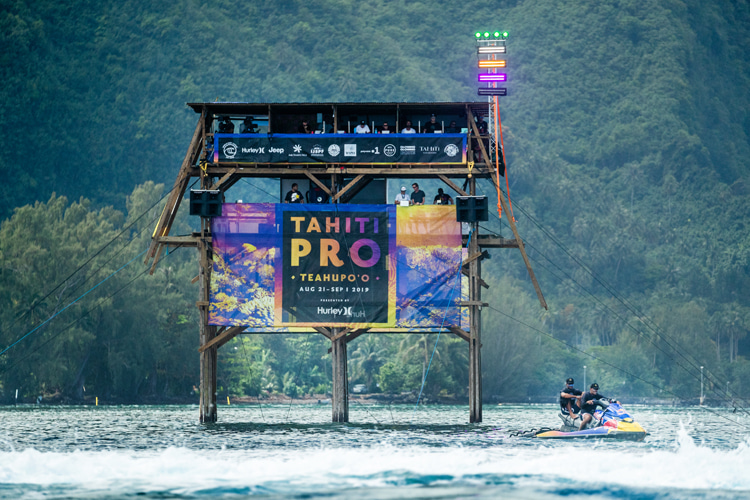A barge used to build the 2024 Olympic surf judging tower at Teahupoo, Tahiti, has damaged the coral reef.
Despite the criticism and the choir of voices that opposed the construction of the controversial judging scaffolding over the past months, the work to replace the old wooden tower has begun.
The International Surfing Association (ISA), the governing body for the sport of surfing and the entity that manages Olympic surfing competitions, has already reacted to the news updates.
"From the beginning of the proposal to host Olympic surfing in French Polynesia, the ISA has always insisted that the protection of the natural environment in Teahupo'o is a priority," the ISA notes.
"The determination that the old judging tower was not legally compliant was taken by the government of French Polynesia. As a result, the French Polynesian government and Paris 2024 decided to build a new tower."
The local Tahitian community has strongly opposed the new aluminum tower, which was initially tagged at $5 million (€4.6 million).
The barge used for the construction of the new tower ran aground on the reef during high tide, forcing the passage across the sensitive ecosystem.
The episode was documented by environmental protection groups, including Save Teahupoo, who were supposed to be taken on the special boat to witness the initial tests but were not informed.
Meanwhile, the President of French Polynesia decided to pause all further testing and preparations to draw lessons following the coral-damaging event.
Timid Protests
Pro surfers Matahi Drollet and Koby Abberton have been using social media to update the surfing and Olympic communities on the disaster taking place under the water surface at Teahupoo.
"I have tagged every surfer in the contest. We want you to threaten to boycott the contest until the drilling and destruction of the reefs stop," wrote Abberton.
Olympic athletes Carissa Moore and Filipe Toledo have already expressed concern about the decision to build the three-story tower.
Other professional surfers are calling for a boycott of the surfing program at the 2024 Summer Olympics in French Polynesia.
Nevertheless, most Olympic athletes have opted for silence for fear of losing sponsorship deals and getting canceled on social media.
The Paris 2024 organizers planned to drill new foundations and holes in the fragile ecosystem to install the judging tower for two or three days of competition.
After the first protests, the organization redesigned the original structure by reducing the surface area to the size of the old wooden tower, i.e., 150 square meters.
The weight of the aluminum tower was also downgraded from 14 to nine tonnes.
The maximum number of people in the scaffolding went from 40 to 25-30 officials and judges.
Wastewater and drinking water connections have also been removed, and a temporary solution for electricity and fiber has also been proposed.
The original wooden judging tower has been in use since 2003.
Teahupoo is one of the most unique surf breaks on the planet. The spectacular wave it generates is only possible thanks to the outstanding underwater geomorphology and shallow coral reef.
The Tahitian natural phenomenon ranks as one of the biggest waves in the world.
